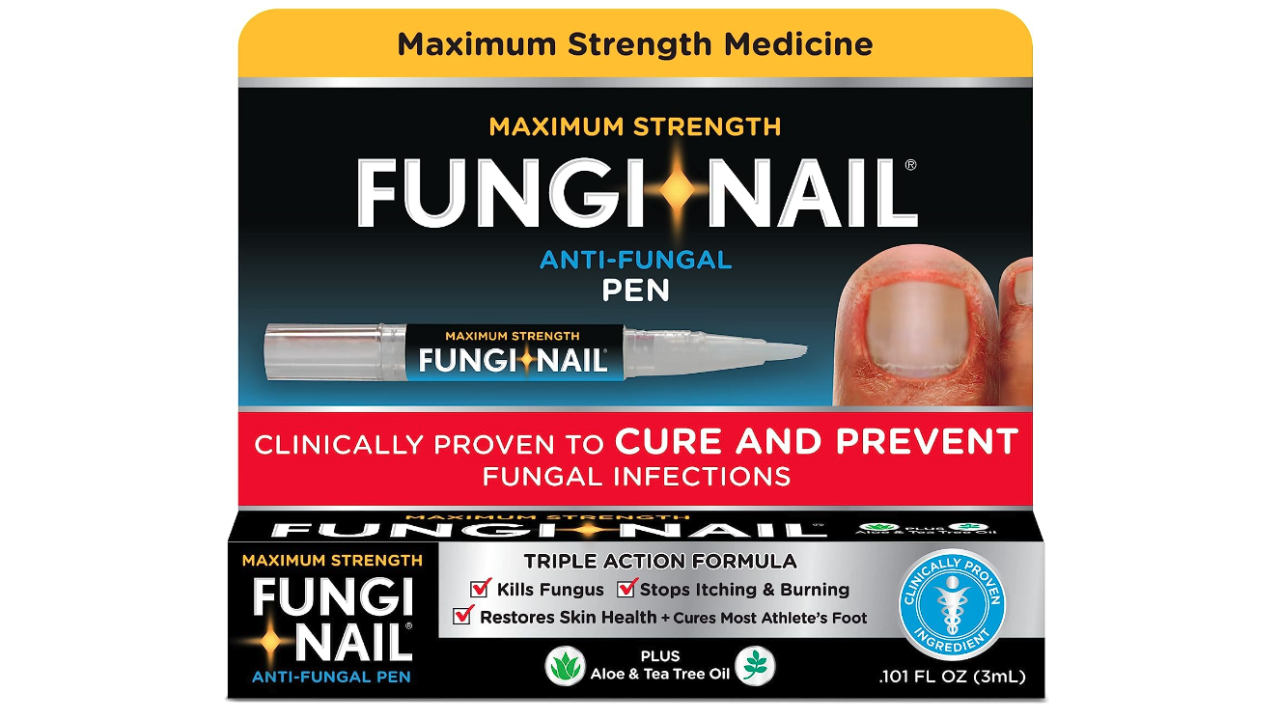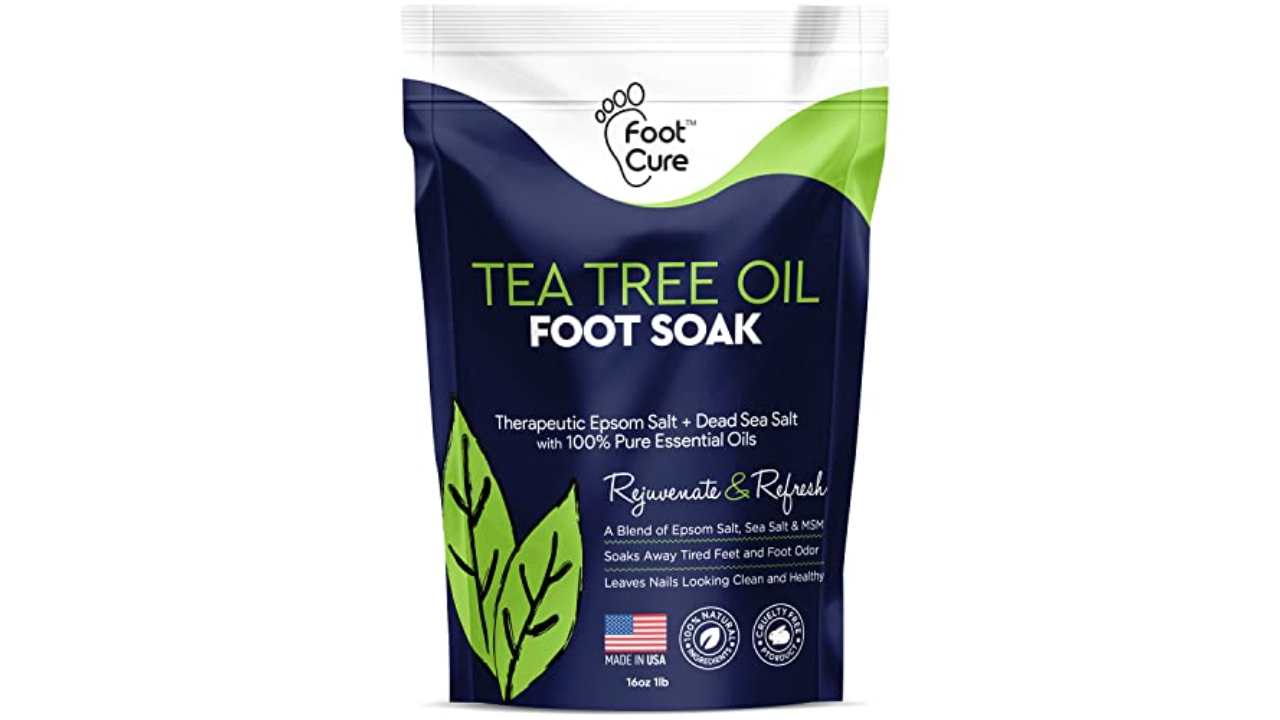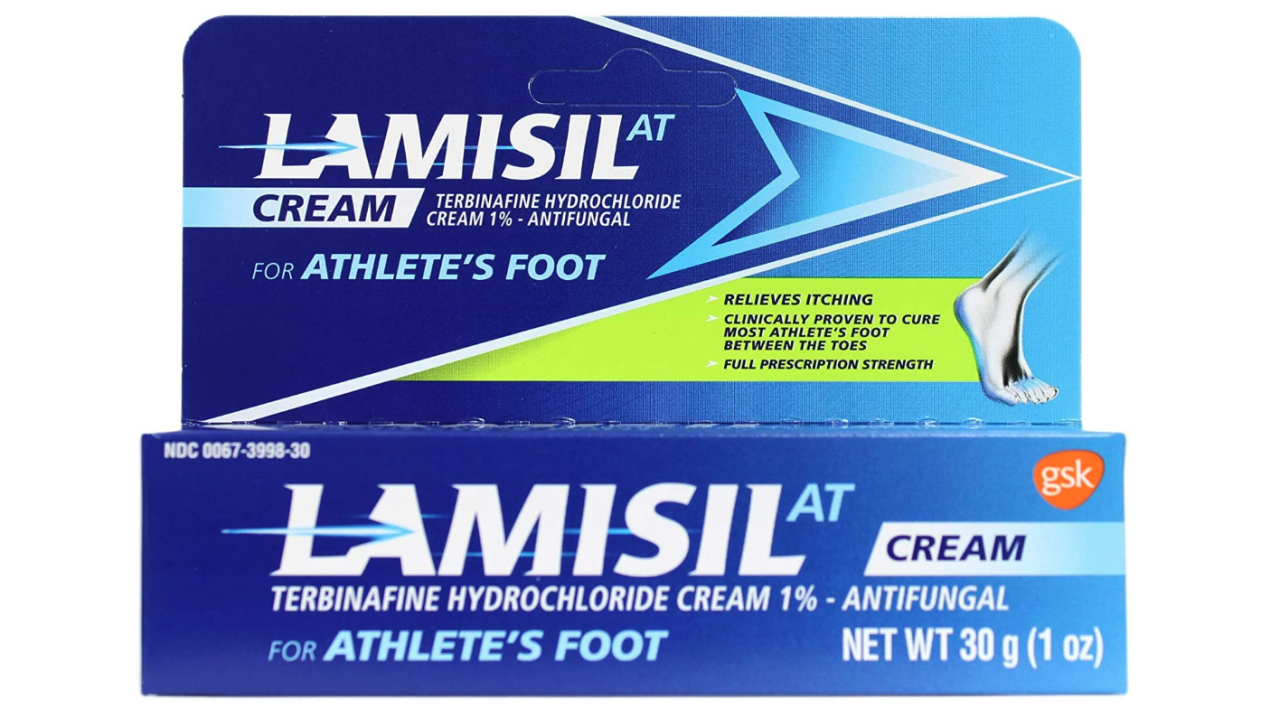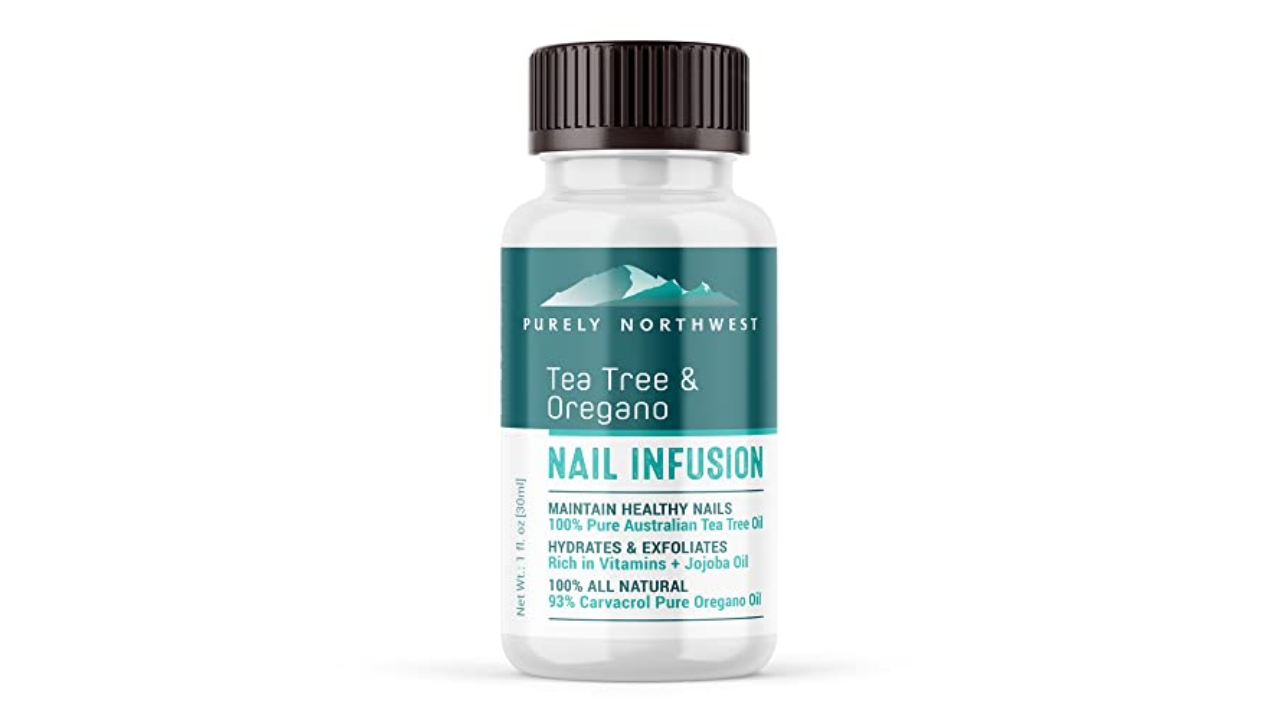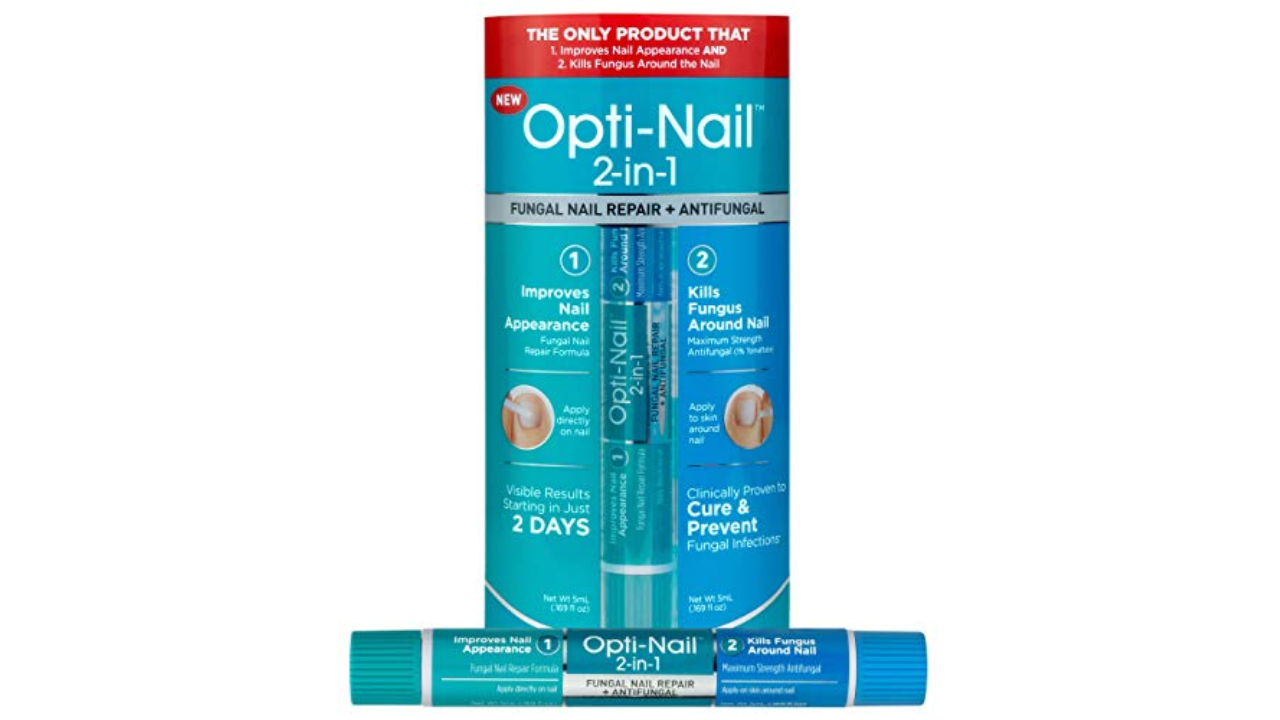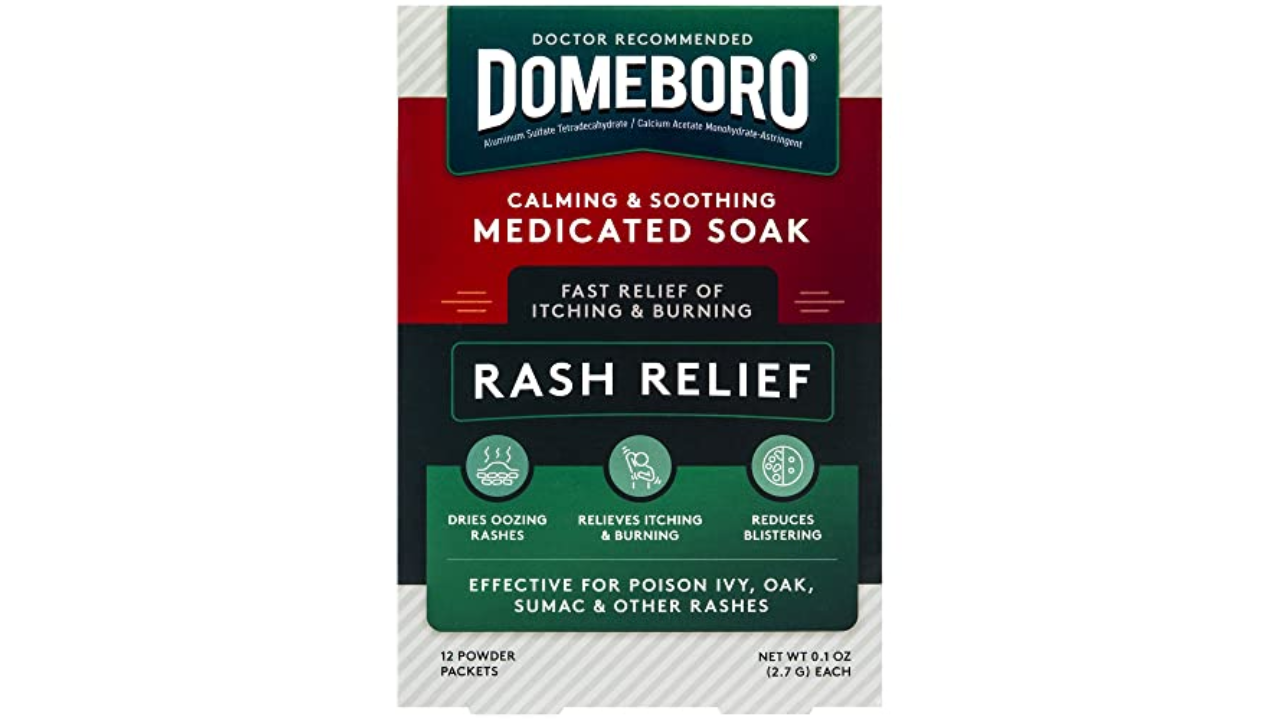We independently evaluate the products we review. When you buy via links on our site, we may receive compensation. Read more about how we vet products and deals.
The best toenail fungus treatment for 2024, according to dermatologists
Kick the ick of toenail fungus with expert-vetted products from Fungi-Nail, Vicks, Toelieva, Lamisil and more.
Toenail fungus. If the term makes you cringe, that's understandable. It's not pretty, and it's rarely the topic of polite conversation. Yet fungal infections of the nails (fingernails included) are common — they affect roughly 10% of the general population, and rates increase significantly as we age.
Fungi-Nail Pen Applicator
Best overall toenail fungus treatment
Vicks VapoRub
Best budget-friendly toenail fungus treatment
Toelieva Antifungal Liquid Solution
Best liquid toenail fungus treatment
Foot Cure Tea Tree Oil Foot Soak
Best foot soak for toenail fungus treatment
Lamisil AT antifungal cream
Best cream for toenail fungus treatment
Purely Northwest Extra Strength All-Natural Fungus Nail Solution
Best all-natural toenail fungus treatment
Opti-Nail 2-in-1 Fungal Nail Repair Kit
Best toenail fungus treatment kit
Kerasal Nighttime Renewal Fungal Nail Patches
Best patches for toenail fungus treatment
Domeboro Medicated Soak
Best treatment for toe discomfort
Fungal infections typically cause toenails to become thick, discolored (white or yellow), misshapen and brittle or crumbly. If that's not bad enough, treating toenail fungus is notoriously tough: It takes patience, and recurrent infections are common, says Dr. Chris Adigun, a board-certified dermatologist at Dermatology & Laser Center of Chapel Hill, in North Carolina. She stresses that only prescription topical and oral medications are clinically proven to banish toenail fungus — and even those treatments (particularly the topicals) often fall short of a cure.
Still, many over-the-counter options can help with mild cases, including brush-on liquids, ointments and foot soaks. And since toenail fungus is usually not medically serious, it's reasonable to give home treatment a shot, says Dr. Amit Garg, a board-certified dermatologist and professor at Zucker School of Medicine at Hofstra/Northwell in New Hyde Park, N.Y.
The downside of all those options? Figuring out the one that's best for you. To dig into the issue, we talked to three dermatologists about why treating toenail fungus is so tricky and which active ingredients in OTC products have the greatest antifungal powers. Using that information, we researched dozens of products and rated them based on ingredients, ease of use, cost and customer ratings. Below are the best toenail fungus treatments for 2024, according to experts.
Price: $9 per applicator/bottle | Active ingredient: Tolnaftate, 1% | Application: Apply twice a day (morning and night)
Fungi-Nail takes the prize for best overall toenail fungus treatment in part because it's easy to use and you can choose between formulations: the pen applicator to zero in on nail edges or the brush-on liquid or ointment when you need to cover a wider area. All three versions contain tolnaftate, a known fungus killer, says Dr. Danilo C. Del Campo, a board-certified dermatologist at Chicago Skin Clinic.
Tolnaftate is included in many products for fungal skin infections such as athlete's foot, jock itch and ringworm. Del Campo says it's best, however, to opt for a preparation designed for nails.
A big caveat — with this and all topical toe fungus products — is that the active ingredient may not reach where it's needed. Nails are hard, Garg points out, and a medication that's readily absorbed into the skin may fail to penetrate the nail plate and reach the tissue underneath.
- Three preparations to choose from: liquid, ointment or pen applicator
- Contains skin-soothing aloe and lavender oil, plus tea tree oil and eucalyptus, which have antifungal properties
- May not penetrate deep enough into nail bed
- Active ingredient may irritate skin
Price: $17.50 for a 6-ounce jar | Active ingredients: Menthol, eucalyptus oil, thymol | Application: Apply with finger or cotton swab at least once a day
Yes, it's that ointment your mom rubbed onto your chest when you were sick as a kid. But both Del Campo and Garg say it just might improve the appearance of a mildly infected toenail. The menthol and eucalyptus oil that give Vicks its famous minty smell also have antifungal properties — as does a secondary ingredient called thymol, Garg notes.
In fact, according to a 2022 research review, there is some limited evidence that Vicks can help improve toenail fungus. One of the studies included in the review found that of 18 people, 15 saw their toenail fungus at least partially clear up after dabbing the affected area with Vicks at least once a day for a year. (Toenail fungus treatment is a long-haul process, the experts say.)
"I do suggest Vicks to certain patients," says Del Campo, who also cites the tactic as his grandmother's favorite remedy. It's cheap and low-risk, he notes, and it may be enough for some people.
- Inexpensive and long-lasting
- Long history of safe use on the skin
- Scientific evidence supports its use for toenail fungus
- Strong odor
- A bit messy to apply
- May not penetrate deep enough
Price: $25 for a 2-ounce bottle | Active ingredient: Undecylenic acid, 25% | Application: Brush on twice a day (morning and night)
Toelieva takes the top prize here because it's an economical choice with a maximum-strength concentration of undecylenic acid, or UA. The compound is derived from the castor oil plant, and it's one of the oldest known fungus-fighters, Del Campo notes. "Undecylenic acid provides an accessible option for managing fungal conditions without a prescription, backed by decades of use," he says.
Still, the effectiveness of UA for toenail fungus varies widely, Del Campo says. One way to improve your odds, he says, is to use a product with a high-enough concentration of UA; another is to use it diligently. Toelieva has the first covered; the second is up to you.
- Active ingredient has proven antifungal powers
- Contains skin-softening olive oil
- May be budget-friendly (Baar says one bottle does the job)
- Users must massage in the liquid after using the brush
- May irritate skin
- May not penetrate deep enough
Price: $16 for a 16-ounce pouch | Active ingredient: Tea tree oil | Application: Soak feet for 15-20 minutes as needed
Here's a foot soak with a lot going for it — it offers the fungus-fighting properties of tea tree oil and eucalyptus oil, which some research suggests are helpful for toenail fungus infections that have not reached the tissue under the nail. The soak also offers bonus skin-soothers like Epsom salt and chamomile oil. Plus, pampering your whole foot, not just your nail, may help relieve symptoms of athlete's foot, which often goes hand in hand with toenail fungus. In fact, toenail fungal infections often begin as athlete's foot: As Adigun puts it, "You basically 'catch' the infection from yourself."
One downside is that foot soaks are a bigger time commitment than other remedies — you have to mix the ingredients in water until they dissolve, then soak your feet for 15 to 20 minutes. In addition, overdoing Epsom salt soaks can dry out or irritate your skin.
- Contains skin-soothing Epsom salt and essential oils
- Also helps address athlete’s foot
- Can be a de-stresser
- Time-intensive
- Unlikely to penetrate the nail
- Overuse may dry skin
Price: $16 for a 1-ounce tube | Active ingredient: Terbinafine hydrochloride, 1% | Application: Apply once or twice a day
Lamisil is known for its ability to vanquish athlete's foot and jock itch, thanks to its active ingredient, terbinafine, a highly potent antifungal. In fact, when it comes to toenail fungus, oral prescription terbinafine is considered the most effective treatment. That said, the terbinafine in topical antifungals doesn't have the same effect because it's acting from the outside, where (once again) the issue is whether it can penetrate the nail and get where it needs to go.
At the same time, there is research suggesting that topical terbinafine — though at a hefty concentration of 10% — can effectively kill toenail fungus with a low risk of side effects. In general, Garg says, it's a matter of weighing risks and benefits: Oral drugs for toenail fungus are most effective but can have side effects and interact with other medications, so some people may prefer (or need) topical treatment. If you're jumping on the problem early, it's reasonable to reach for an OTC product first, Garg says.
- Contains a powerful antifungal ingredient
- Easy to use
- Budget-friendly
- Not designed for nail application
- May not penetrate deep enough
Price: $19 for a 1-ounce bottle | Active ingredients: Tea tree oil, oregano oil | Application: Apply once or twice per day
This simple brush-on blend stands out for its combination of active ingredients — tea tree and oregano oil — which have been tested in a few small clinical trials. One study published in 2020 looked at the effects of an oil blend containing tea tree, oregano, lime and vitamin E: Of 20 participants who applied the oil daily for six months, 15 were cured — that is, the fungus was gone and their nails looked healthy.
Del Campo and Garg say tea tree oil has antifungal properties and that it's worth a shot for mild cases of toenail fungus. While tea tree oil can cause skin irritation, it's a low-risk ingredient, Garg says.
- Easy brush-on application
- Contains jojoba oil to hydrate and condition nails
- Budget-friendly
- Tea tree oil can irritate skin
- May not penetrate deep enough
Price: $22 for a .34-ounce container | Active ingredient: Tolnaftate, 1% | Application: Apply twice a day (morning and night)
We like the way this 2-for-1 partners tolnaftate with a nail repair solution. Let's face it: You want an antifungal that works, but you also want that unsightly nail to look better while you're waiting. Opti-Nail promises to help. Step one is to apply the nail repair liquid, which contains lactic acid, glycerin and other ingredients designed to brighten the nail. Then, you brush the tolnaftate solution on top. Both products are housed in one handy pen that makes application easy and mess-free. That said, you end up getting a relatively small amount of the antifungal treatment for the price.
- Contains an effective antifungal
- Contains ingredients to boost nail appearance
- Easy to apply
- More expensive
- May not penetrate deep enough
- May irritate the skin
Price: $19 for 14 patches | Active ingredient: None | Application: Wear once a day for 6-8 hours
These patches are easy to apply (and despite the name, you can wear them during the day if you prefer). It's important to stress that they contain no antifungal medication. The manufacturer says the ingredients — including glycerin and tartaric acid — can help fungus-damaged toenails look better by hydrating and exfoliating the area. Consider these an add-on to whatever else you're doing to battle your fungal infection.
- Easy to use
- Little risk
- Pricey (manufacturer suggests up to six months of use)
- Contains no antifungal ingredients
Price: $14 for 12 packets | Active ingredient: Aluminum acetate | Application: Soak feet for 15-30 minutes, up to three times a day
Experts stress that if your toe hurts, you should see a doctor. "Toenail fungus should not hurt," Adigun says. If there's pain, that could mean there's something else going on, like a bacterial infection. And sometimes what looks like toenail fungus is actually a different animal altogether, Del Campo notes: The skin condition psoriasis, for example, sometimes appears in the nails first.
That said, if you're having minor skin irritation — whether from a topical antifungal or a bout of athlete's foot — Del Campo says Domeboro foot soak is a time-honored soother. The brand has been kicking for over 60 years, and the benefits of the active ingredient, aluminum acetate, have been recognized for even longer. "Sometimes the old stuff works," Del Campo says.
The tactic does take some effort — dissolving the powder into water, then soaking your feet for up to a half hour, multiple times a day. Somewhat paradoxically, aluminum acetate can also end up causing skin irritation for some people, so ease into the treatment and work up to three soaks per day.
- Soothes minor skin irritation from many causes
- Widely available and budget-friendly
- Time-intensive
- May irritate skin (or eyes if you splash)
Factors to consider when buying a toenail fungus treatment
Active ingredients. Look for antifungals that can kill the types of fungus that frequently invade the toenail. These include terbinafine, tolnaftate, undecylenic acid and clotrimazole.
The severity of your problem. OTC products will only work for mild cases of toenail fungus. Garg says that means you may have one or two nails that look only superficially affected — that is, with the tissue under the nail unaffected. If your situation is more severe, don't mess around with home remedies. Adigun stresses that even prescription-strength topical medications aren't always effective on serious fungal toenail infections.
Duration of use. Toenail fungus does not succumb easily. The experts point to prescription treatments: Topical medications are typically taken for a year, and even pills generally take three months to work. If an OTC product promises to do the job in a week, don't buy it.
FAQs
Will anything kill toenail fungus instantly?
The short answer is no. Toenail fungus treatment requires consistent and ongoing application of antifungal ingredients, and even long-term treatment may not eradicate challenging infections.
How long should I use an OTC treatment?
It's a tough question. A toenail takes a year or longer to grow out, Del Campo notes. So even if a treatment is knocking out the fungus, you'll probably have to wait patiently to see a completely healthy-looking nail. What all three dermatologists did say: If you've been using an OTC antifungal for two months and aren't seeing any improvement, it's time to see a doctor.
When should I see a doctor about toenail fungus?
In general, the experts say it's wise to consult a doctor as soon as you think you have toenail fungus. While Garg offered a loose definition of a "mild" case that may respond to home treatment, he says it's also tough to judge that with your own eye. If you see a doctor, you'll have a better sense of what's going on and can opt for OTC treatments if you prefer. If your fungal infection looks more extensive — or "if you have any doubts," Del Campo says — make that appointment. Finally, toenail fungus is a serious matter for people with certain health conditions, like diabetes and HIV, and they should see their doctor at the first signs of a problem, according to the Centers for Disease Control and Prevention.
Can I prevent toenail fungus from coming back?
Fungus is everywhere, so it's hard to avoid altogether, Garg points out. Even among people who use oral medications to treat toenail fungus, 20%-25% see a recurrence, often within two years. Some people are just prone to foot fungus, Adigun says.
However, Garg says that some simple steps — keeping your nails trimmed, changing socks regularly and sprinkling antifungal powder in your shoes — can help ward off recurrences. And since athlete's foot fungus can spread to the toenails, Adigun says that treating and preventing that condition is also key.
Meet our experts
Chris Adigun, MD, board-certified dermatologist, Dermatology & Laser Center of Chapel Hill, Chapel Hill, N.C.
Danilo C. Del Campo, MD, board-certified dermatologist, Chicago Skin Clinic
Amit Garg, MD, board-certified dermatologist and professor of dermatology, Zucker School of Medicine at Hofstra/Northwell, New Hyde Park, N.Y.









